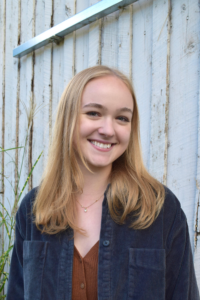Principle Investigator (PI)
From 1998-2009 I functioned primarily as an individual scientific researcher using computers to study the evolutionary origins of the central dogma of molecular biology. This work continues through a focus to explore alternatives to the “alphabet” of 20 amino acids with which genetic material evolved to encode proteins, early in our planet’s history. Current projects include chemical library construction and analysis, Ramachandran plots for oligopeptides composed of xeno amino acids, and 3D printing xeno amino acids.
Since 2009 I have focused on developing team-based academic projects and programs. For research, this activity surrounds broad questions of astrobiology and abiogenesis. For teaching and administration, I do this by directing UMBC’s Individualized Study program, INDS.
Current Members
I am a biological Sciences Doctoral Candidate at the University of Maryland, Baltimore County with a focus on astrobiology, synthetic biology, and theoretical biochemistry.
My work asks the question of what alien or alternative protein biochemistry would look like. Would it be eerily similar or starkly different from what we have seen for the past ~3.5 billion years on Earth?
Life on Earth has evolved to construct metabolism as a network of genetically encoded proteins. Each protein comprises a sequence of amino acids, covalently linked together. Early evolution established a single, standard library of 20 L-⍺-amino acids with which to build proteins since life’s last universal common ancestor (LUCA). Multiple disciplinary lenses agree, however, that a far greater diversity of amino acid structures was available to life’s origins and early evolution.
Amino acids appear readily available to the planetary bodies that comprise our galaxy (Ehrenfreund, 2001). They have been detected within meteorites (Pizzarello, 2004), produced by a wide range of conditions for simulating prebiotic chemistry (Cleaves et al., 2010), and have even been theorized to occur within the interstellar medium (Shock, 2002).
Given that a single set has proven capable of building proteins adapted to every imaginable environment for life on Earth (Brininger et al., 2018) for more than 3.5 billion years, they are an attractive, recognized focus of astrobiological research. A decade of research now supports the idea that the genetically encoded set of 20 amino acids exhibits highly unusual physicochemical properties as a set. The range and evenness with which they cover the chemistry space of possible volume and hydrophobicity are remarkable when compared to random alternatives.
This theory has matured far enough that it is both tractable and useful to now ask the question: if an independent origin of life were to build proteins using amino acids then what would we expect, using Earth life as a guide?
Corleigh Forrester
Undergraduate Researcher
I am a Bioinformatics & Computational Biology student and Meyerhoff Scholar (M31). Following a research experience at the University of Washington, I developed a deep interest in computational molecular science and protein interactions. My current research interests include proteomics, computational molecular science, molecular modeling, and data science. In joining the Freeland Lab I am hoping to contribute to the development of a xeno amino acid alphabet through analysis of molecular interactions and developing an understanding of the building blocks of life on Earth and beyond.
Valerie Zhou
Undergraduate Researcher
I am a Biological Sciences Major, and my research interests include genetics as well as the evolution of life on Earth. When I was first introduced to the lab, I found the idea of Astrobiology fascinating, especially as I had never explored this area of science before. My work in the Freeland Lab broadened my expertise in areas that I didn’t have much exposure to before, such as studying Ramachandran space or learning how to code with Python to process data.
Julia Sunnarborg
Undergraduate Researcher
I am a Biological Sciences major on the pre-med track, Music Minor, and a member of the Honors College. My research interests include origins of life and the evolution of our genetic code. Recently I have been exploring the role of D-amino acids, primarily in eukaryotes, as well as the concept of unimaginably large amino acid and protein combinatorial space.
Evan Allgair
Undergraduate Researcher
I am a Computer Science B.S. and Economics B.A. double major, with expertise in machine learning and artificial intelligence. In the past, I have worked to develop workflow solutions in Test and Evaluation using AI and Large Language Models. Here, my interests lie in algorithmic processes (i.e. machine learning) and an interdisciplinary focus on Astrobiology. I believe computer science can be applied to almost any discipline, and can be a great resource for finding hidden patterns and relations in large data sets for further review.
Graduate Alumni
Chemically, there exist infinite amino acid structures and yet the genetic codes of all extant life use an alphabet of just 20 α-amino acids to construct proteins. What is special about these 20 amino acids? This question has been discussed for individual members of the coded amino acids (e.g. Weber and Miller, 1981) from a chemical perspective, but I focus on an evolutionary perspective that asks why nature chose one set of chemical structures over another. In choosing to start from an assumption that the standard amino acid alphabet is an outcome of natural selection, I emulate the concept of chemical etiology that Albert Eschenmoser used to ask similar questions about ribose (Eschenmoser, 1999).
Unusual patterns in the coded alphabet already suggest a possible footprint for natural selection (Ilardo et al. 2015). My PhD has sought to understand in greater chemical detail what exactly was being selected for. I apply computational chemistry tools to address these questions, comparing the coded alphabet to other plausible alphabets. In doing so, I hope to not only shed light on the origin and evolution of life on Earth but also identify design principles that could be used for synthetic biology (e.g. Mayer-Bacon et al. 2021).
Undergraduate Alumni
 Neyiasuo Agboha
Neyiasuo Agboha
Undergraduate Student
My current research interests are in astrobiology, specifically the evolution of the amino acid alphabet. I recently worked on collecting data from diverse publications about the non-canonical amino acids that have been incorporated by experimentalists into genetic decoding (ribosomal protein synthesis). This is, to the best of our group’s knowledge, the first time that this data has been collected in one place. The result highlights how many non-canonical amino acids have actually been incorporated into genetic code and that this rapidly growing data set deserves greater attention.
The data I collected and compiled is available through Supplementary Information file “Combined Review Data” and summarized in Figures 1, 2 and 7 of the paper, “Evolution as a Guide to Designing xeno Amino Acid Alphabets“. This data includes the chemical structures involved, the peer-reviewed source which reports these amino acids’ use and more.
 Mickey Muscalli
Mickey Muscalli
Undergraduate Student
When we think about what life outside Earth might look like, it makes sense to first examine the life all around us. Earth has a storied history of development and evolution which has occurred at the intersection between fundamental chemistry and biology. My research thus far has explored this space through the examination and 3D modeling of potential amino acid “xeno alphabets,” which incorporate amino acids not found in the genetic code of life on earth. As an aspiring astrobiologist, topics like these help provide context for how and why life has developed on our planet in the ways it has. It’s my hope that by learning about Earth’s own life history, we can glean something meaningful about the development of life in the greater cosmos.
As part of Dr. Freeland’s lab group, I created a simple hill-climbing algorithm to generate potential sets of xeno Amino Acids optimized for specific physiochemical qualities. This data was used as part of the paper “Evolution as a Guide to Designing xeno Amino Acid Alphabets.” More recently I have modeled and 3D-printed a series of flexible, modular amino acid pieces in order to help construct and visualize novel structures like these.






